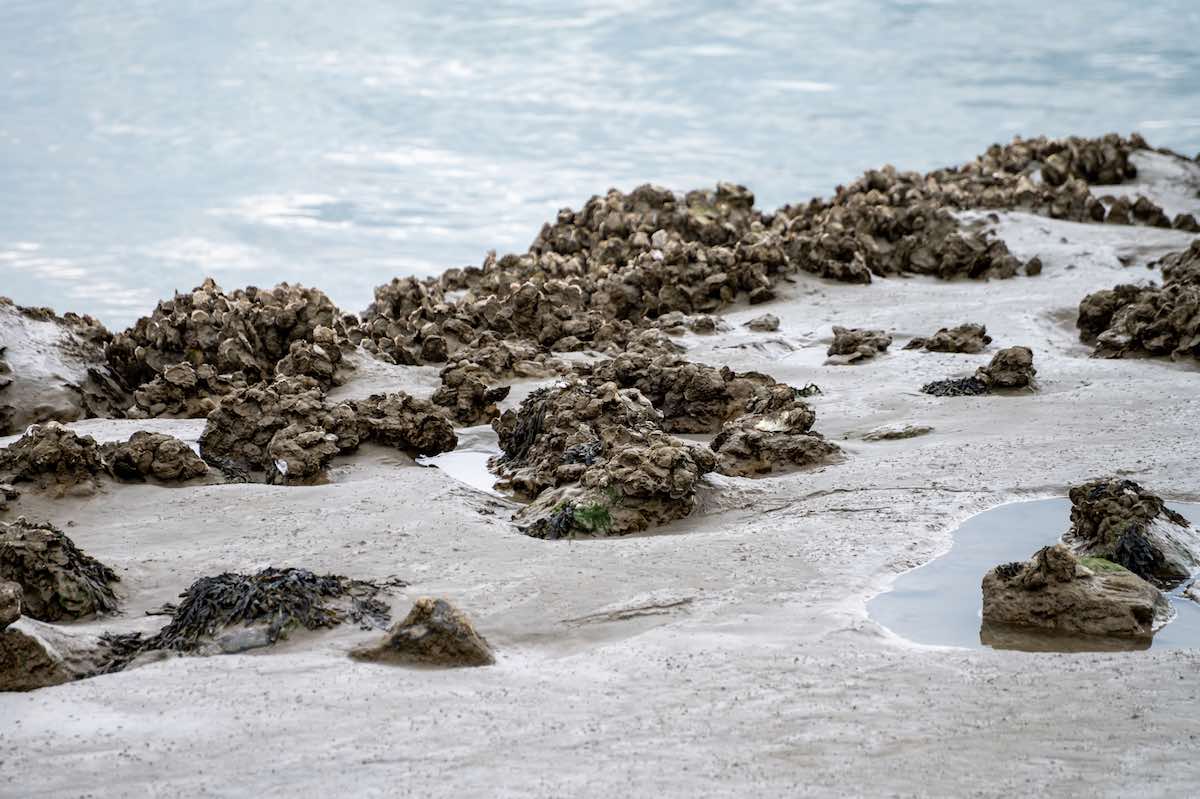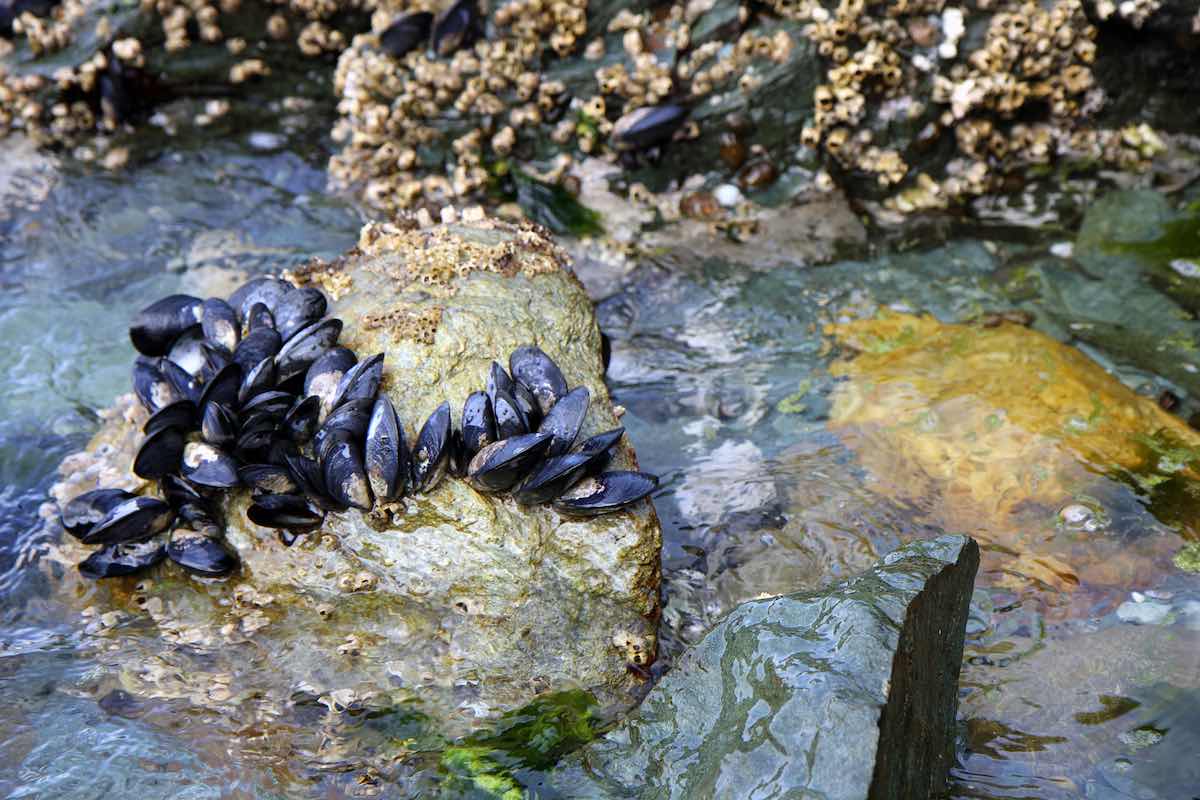 Let’s talk about how oysters are an affordable and sustainable solution to purify seawater and fight pollution. Find out about their filtration process and the environmental and economic benefits they offer in our article.
Let’s talk about how oysters are an affordable and sustainable solution to purify seawater and fight pollution. Find out about their filtration process and the environmental and economic benefits they offer in our article.
Marine water pollution is a global environmental problem affecting marine biodiversity, the coastal economy and human health. Pollution can be caused by a variety of factors, including toxic waste dumping, overfishing, overfarming, and climate change. The solution to this problem is not easy and requires a multifaceted approach involving different sectors and levels of government.
However, a promising solution to combat marine water pollution is the use of oysters as a natural purification system. Oysters are filter feeders that feed on microorganisms and particles suspended in the water. In this way, oysters clean the water around them, removing particles of sediment and nutrients and decreasing the presence of pathogens.
Also, a large number of oysters can purify large amounts of water in a short period of time. This makes them an efficient and low-cost technology for cleaning and purifying seawater.
 How does the natural purification of oysters work?
How does the natural purification of oysters work?
Oysters are filter feeders that use their gills to clean the water around them. As water flows through their gills, oysters feed on microorganisms and suspended particles, such as sediment and nutrients. These are retained in the digestive system and then excreted as part of the normal metabolic process.
The filtering process of oysters is very efficient, as they can filter large amounts of water in a short period of time. For example, a single adult oyster can filter up to 50 gallons (190 liters) of water per day. Additionally, oysters are capable of removing a variety of particles and nutrients, including sediment, organic matter, and nutrients such as nitrogen and phosphorus. These nutrients are known to cause eutrophication , a phenomenon in which nutrient levels in the water are so high that they promote excessive algae and plant growth, which can cause problems for marine life.
In addition to cleaning the water, oysters can also help reduce the presence of pathogens in the water . This is because oysters can ingest and kill pathogens such as bacteria and viruses, reducing their presence in water and helping to protect human health.
In summary, oysters are able to clean seawater through an efficient filtration process where the oysters ingest and remove particles, nutrients and pathogens present in the water, helping to reduce pollution and improve quality of the water. .
Benefits of natural cleansing with oysters.
Natural purification with oysters offers a series of environmental and economic advantages. By purifying seawater, oysters help reduce pollution and improve water quality. This can have a positive impact on marine biodiversity, as cleaner water is more conducive to marine life. Furthermore, it can improve human health by reducing the presence of pathogens in water.
By reducing the amount of nutrients in the water, oysters may also help prevent eutrophication, a phenomenon in which nutrient levels in the water are so high that they promote excessive algae and plant growth. Eutrophication can cause problems for marine life and can make the water unattractive for swimmers and tourists .
Natural purification with oysters is a sustainable and low-cost solution.
Unlike traditional purification systems , which can be expensive to build and maintain, using oysters as a natural purification system is relatively inexpensive. Plus, oysters are a natural way to clean water, meaning they don’t require the use of chemicals or energy to work.
As oysters become an increasingly popular way to purify water, a new economic opportunity is being created for fishermen and farmers. They can farm oysters and sell them for food or use them to purify water in purification projects.
Applications and projects in progress.
Natural oyster purification is implemented in projects and programs of various sizes and scales around the world, from small river and stream purification projects to larger bay and estuary purification projects. The goal of these projects is to improve water quality and fight pollution, contributing to the conservation of marine ecosystems.
Some examples of ongoing applications and projects include:
River and Stream Purification Projects – In these projects, oysters are used to clean polluted river and stream water of toxic wastes and nutrients. For example, in New York State, an Oyster River Purification Program has been implemented in which oysters are placed in rivers and streams to clean the water before it reaches the ocean.
Bay Cleanup Projects – In these projects, oysters are used to clean bays and estuaries that are affected by eutrophication. For example, a pilot project was conducted in the Chesapeake Bay in Maryland, USA, to use oysters to clean the bay and reduce nutrient levels.
Purification project in the Mar Menor: The general objective of the RemediOS project is the use of bivalves in bioremediation actions (nature-based solutions, NbS) in degraded ecosystems, applying their aquaculture techniques. RemediOS focused on the flat oyster, Ostrea edulis, as a species to be assessed and the Mar Menor salt lagoon as a case study.
Edible Oyster Farming Projects – In these projects, oysters are farmed for both their consumption and their ability to purify water. For example, several projects are underway in the UK where oysters are farmed for consumption and used to clean water in the same area.
Monitoring and Conservation Projects – In these projects, oysters are used to monitor water quality and to help conserve oyster populations in coastal areas. For example, in Australia, a project has been implemented to monitor water quality on the Great Barrier Reef through the use of oysters and to help conserve oyster populations in the same area.
Challenges and barriers.
Despite the environmental and economic benefits of natural oyster purification, there are several challenges and obstacles to face when implementing this system. Some of these challenges and barriers include:
Oyster Shortage: Implementing natural purification systems with oysters requires a significant amount of oysters. However, in some areas, oyster populations can be low due to factors such as overfishing, pollution and the introduction of invasive species.
Lack of knowledge on oyster management: While natural oyster purification is a low-cost and efficient technology, it requires proper management to ensure its success. Lack of knowledge on how to properly manage and farm oysters can be an obstacle to implementation.
Introduction of invasive species: Oysters can be sensitive to competition and introduced predators by humans. Introducing invasive species can compete with native oysters, reducing their population and effectiveness in purifying water.
Financing: The development and maintenance of a natural oyster purification system can require large start-up capital for installation and operating costs, and these can be a barrier to implementation in some regions.
Uncertainty about its effectiveness in all conditions: Although several projects and studies have been conducted to evaluate the effectiveness of natural oyster purification, there is still uncertainty about its effectiveness in all water conditions, especially in areas with high levels of pollution.
Despite these challenges and barriers, natural oyster purification remains a promising technology to combat seawater pollution and improve water quality.
It is important to continue the research and development of this technology to overcome these challenges and barriers and make it more accessible and effective in a variety of conditions.
In addition, it is necessary to promote collaboration between different sectors, such as fisheries, agriculture, research and government, to develop programs and projects of natural purification with oysters that are sustainable and economically viable.









